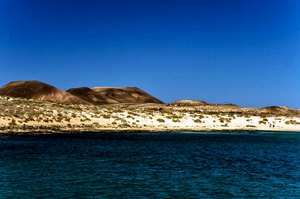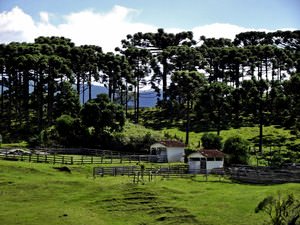 There are no pieces of architecture older than five-and-a-half centuries old here on to Graciosa Island. The reason is simple: the archipelago is located quite far from the mainland, so nobody was living here before Portuguese navigators came. The colonization of the island started in the second quarter of the 15th century. Ordinary Portuguese looking for a better life as well as bourgeois who were hoping to start their own manufacture were the first one who came here. However, the island was gradually becoming significant as a seaport on the route between the Old and the New World.
There are no pieces of architecture older than five-and-a-half centuries old here on to Graciosa Island. The reason is simple: the archipelago is located quite far from the mainland, so nobody was living here before Portuguese navigators came. The colonization of the island started in the second quarter of the 15th century. Ordinary Portuguese looking for a better life as well as bourgeois who were hoping to start their own manufacture were the first one who came here. However, the island was gradually becoming significant as a seaport on the route between the Old and the New World.
Despite the fact that Graciosa Island is not the most popular destination among European fans of active holidays, still, there are diverse activities besides just local attractions. For …  Open
Open
The beaches of the Graciosa Island are lengthy. Almost all of them are covered with pure white sand. It is noteworthy that a significant part of the coast is available for water activities …  Open
Open
 If you’re more fond of the monument’s ancient history, not the aesthetical aspect, we would recommend you to go to Guadalupe Island. There is a homonymous church there which was built in the 16th century. The cathedral is still in proper condition, even though it has never been reconstructed or restored.
If you’re more fond of the monument’s ancient history, not the aesthetical aspect, we would recommend you to go to Guadalupe Island. There is a homonymous church there which was built in the 16th century. The cathedral is still in proper condition, even though it has never been reconstructed or restored.
On the Graciosa Island, there are only three hotels and each of them attractive in their own way. For holidaymakers who got used to staying at the highest-level hotel, the hotel Graciosa is …  Open
Open
 There are diverse pieces of art constructed by European architectures. It has to do with the necessity to supply inhabitants with drinking and process water. It creates a whole chain of semi-underground reservoirs and aqueducts. Local Flemish mills with red domes (typical for Graciosa) are extremely marvellous too. And there is a lot of such mills, as people used to produce great amounts of cereal. Besides, country houses of 16th, 17th, and 18th century have also survived up to date. Then, there are lots of buildings dated back to the 18th century in the local harbour. In that period twice more ships (in comparison to the previous century) started to come here due to the fast development of trade relations between the USA, Africa and Europe.
There are diverse pieces of art constructed by European architectures. It has to do with the necessity to supply inhabitants with drinking and process water. It creates a whole chain of semi-underground reservoirs and aqueducts. Local Flemish mills with red domes (typical for Graciosa) are extremely marvellous too. And there is a lot of such mills, as people used to produce great amounts of cereal. Besides, country houses of 16th, 17th, and 18th century have also survived up to date. Then, there are lots of buildings dated back to the 18th century in the local harbour. In that period twice more ships (in comparison to the previous century) started to come here due to the fast development of trade relations between the USA, Africa and Europe. 

